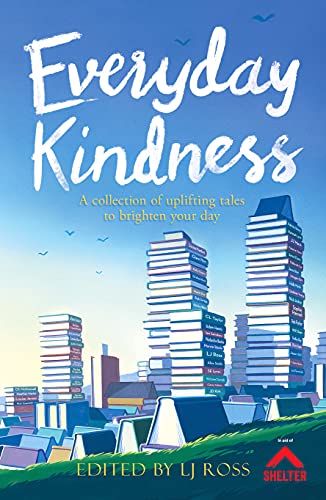 Story settings serve as the backdrop, providing a tangible environment in which characters interact and events unfold. Most settings are realistic and straightforward, providing physical attributes of necessary locations in the story. But writers can raise stories to a higher level by employing symbolic and archetypal settings that go beyond mere description to act as metaphors for abstract concepts, emotions, or themes.
Story settings serve as the backdrop, providing a tangible environment in which characters interact and events unfold. Most settings are realistic and straightforward, providing physical attributes of necessary locations in the story. But writers can raise stories to a higher level by employing symbolic and archetypal settings that go beyond mere description to act as metaphors for abstract concepts, emotions, or themes.
As representatives of the collective human experience, symbolic and archetypal settings enable writers to explore profound themes, create resonance, and immerse audiences in narratives that transcend the confines of the tangible world. Symbolic settings imbue narratives with layers of meaning, allowing writers to convey emotions, themes, and abstract concepts. Taken a step further, archetypal settings tap into shared cultural symbols and myths, offering familiar frameworks that connect deeply with readers.
Over the last few years, I have taught quite a bit about the power of archetypal stories. Specifically, in the many articles on this site, in my book Writing Archetypal Character Arcs, and in my recent Shadow Archetypes course, I have talked about how character archetypes can be used to create potent character arcs. Inherent to all those discussions are many other archetypes and symbols. If you’ve read the beat sheets I’ve provided for the six primary archetypal journeys, then you know they are steeped in mythological and metaphorical language. Something I’ve touched upon in those discussions but never directly addressed are archetypal settings.

A while back I received the following email from Matt Wright:
I’ve been looking into “setting archetypes” as tools for writers to use in their stories but haven’t found much out there. Symbolism.org calls it “Place Symbolism.” … I wonder if you have any thoughts on this?
Today, I thought it would be fun to dive deeper into this topic. Setting is such a crucial element within fiction. Often, we will refer to it as “a character in its own right.” When done well, setting exists as so much more than simply a physical background designed to convince readers of a certain degree of realism. Rather, setting functions as context for everything in a story, which is what, in turn, deepens the opportunity for thematic subtext.
>>Click here to read “How to Choose Story Settings: The 4 Basic Types of Setting”
Although setting’s ability to offer commentary upon the rest of the story can, and often will, arise naturally from the writer’s own subconscious during creation, it is valuable to bring a deeper understanding to the symbolic and archetypal possibilities available for your stories’ settings.
There is much overlap between symbolic and archetypal settings. The distinction lies in contrasting their respective scope and significance.
A symbol is a specific object, image, or element that represents a broader, often abstract idea, theme, or concept. It carries meaning beyond its literal interpretation and can evoke emotions or convey complex notions within the context of a story. Symbols are versatile and can vary in interpretation across different cultures and contexts.
On the other hand, an archetype is a recurring pattern, character, theme, or setting that embodies universal symbols and resonates similarly across cultures and time. Archetypes are deeply rooted in collective human experiences and myths, representing fundamental aspects of the human psyche. They serve as timeless, recognizable molds that shape characters, narratives, and settings, providing a shared framework for how we understand and interact with stories.
While a symbol is specific and context-dependent, an archetype is broader and taps into the fundamental, archaic elements of storytelling that transcend individual tales. In essence, symbols are components within a narrative, while archetypes are overarching, recurring motifs that underpin the very structure of stories.
What Are Symbolic Settings?
Almost every story you can think of features a setting that qualifies as symbolic. Indeed, sometimes the entire story will be created around a specifically symbolic setting. This needn’t be overt. Although a story such as Labyrinth may be obvious in using its titular setting to explore the inner maze of the evolving self, stories such as Gilmore Girls or Sweet Magnolias may use the cozy confines of a small town to symbolize safety, support, and friendship in a much more natural and invisible way.

Sweet Magnolias (2020-), Netflix.
Even stories that aren’t explicitly aware of their own symbolism often end up using settings that reflect characters’ moods or internal struggles. For example, graveyards are commonly used as backdrops for explorations of grief, terror, or mortality.
A skilled writer who is conscious of the power available in setting will tweak settings to create important symbolism. For example, both the James Bond and Jason Bourne movies are about globe-trotting spies, but the way the international settings are used evoke totally different moods and metaphors to support the respective characters’ personal journeys.

The Bourne Identity (2002), Universal Pictures.
Following are some of the more common symbolic settings you might use in your stories.
1. Maze or Labyrinth
Represents the journey of self-discovery, challenges, and the complexity of life.
For Example: Labyrinth, Pan’s Labyrinth, The Maze Runner, Inception
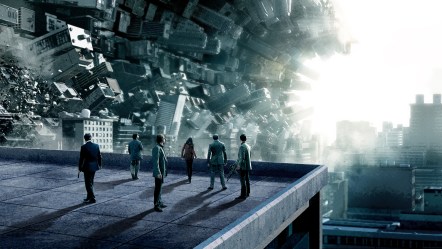
Inception (2010), Warner Bros.
2. Forest
Symbolizes mystery, danger, the unknown, themes of transformation and growth, healing, connection to nature, and harmony.
For Example: The Lord of the Rings, Where the Red Fern Grows, Princess Mononoke, Robin Hood, Where the Wild Things Are

Princess Mononoke (1997), Studio Ghibli.
3. Desert
Conveys isolation, hardship, emptiness, and spiritual journey.
For Example: Lawrence of Arabia, The Ten Commandments, Dune, Mad Max: Fury Road, The Alchemist, The English Patient

Mad Max: Fury Road (2015), Warner Bros.
4. Cave
Represents secrets, hidden truths, self-reflection, and the concept of rebirth.
For Example: The Empire Strikes Back, The Descent, Plato’s allegory of “The Cave.”

Star Wars: The Empire Strikes Back (1980), 20th Century Fox.
5. Castle or Fortress
Signifies power, authority, protection, and can also represent imprisonment or confinement.
For Example: Dracula, The Last Castle, Harry Potter, Beauty & the Beast
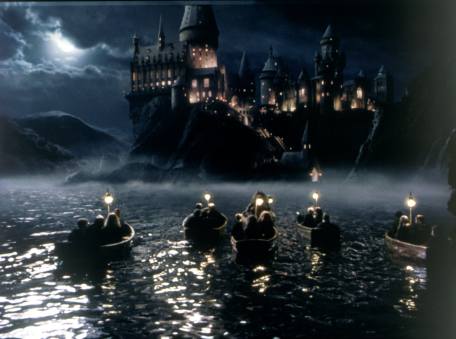
Harry Potter and the Philosopher’s Stone (2001), Warner Bros.
6. Ocean or Sea
Symbolizes the subconscious, vastness, exploration, the unknown, and the mysteries of life.
For Example: Life of Pi, Moby-Dick, The Old Man and the Sea, Moana, 20,000 Leagues Under the Sea, Finding Nemo, Cast Away, Ponyo

Moana (2016), Walt Disney Pictures.
7. Island
Represents solitude, isolation, self-discovery, and serves as a microcosm reflecting society.
For Example: Lord of the Flies, Robinson Crusoe, Swiss Family Robinson, The Tempest, And Then There Were None

Lord of the Flies (1963), British Lion Film Corporation.
8. Cityscape
Captures the essence of modern life, complexity, anonymity, and the opportunities and challenges of urban existence.
For Example: Blade Runner, Metropolis, West Side Story, The Great Gatsby

West Side Story (2021), 20th Century Fox.
9. Mountains
Signifies challenges, obstacles, spiritual ascent, and isolation.
For Example: Into Thin Air, Seven Years in Tibet, The Mountain Between Us.

Seven Years in Tibet (1997), Sony Pictures.
10. Ruins
Evokes themes of decay, the passage of time, and the aftermath of civilization.
For Example: The Road, I Am Legend, Indiana Jones, City of Ember, The Time Machine

The Road (2009), 2929 Productions.
11. Garden
Symbolizes Eden, innocence, the healing power of nature, and personal growth.
For Example: The Secret Garden, The Gardener

The Secret Garden (2020), StudioCanal.
12. Tunnels
Signifies hidden truths, the passage between worlds, and the exploration of the subconscious.
For Example: Alice’s Adventures in Wonderland, Pan’s Labyrinth, The Great Escape

The Great Escape (1963), The Mirisch Company.
13. Outer Space
Represents infinity, the unknown, exploration, and the cosmic forces that shape human existence.
For Example: 2001: A Space Odyssey, Solaris, Interstellar, The Hitchhiker’s Guide to the Galaxy, The Martian, Ender’s Game

The Martian (2015), 20th Century Fox.
What Are Archetypal Settings?
Archetypal settings make use of symbolism, but take everything to a deeper place. In part, this depth is achieved through the shared understanding between writer and readers that the archetype represents not just thematic resonance, but a potential initiation of the psyche.
Archetypal settings may be literally archetypal in their presentation. For example, you may represent the Underworld in your story as Hades or some other equivalent. But it can also be represented more symbolically. In some stories, an underground tunnel, a graveyard, or the criminal “underworld” may be understood to represent more than just the setting’s practical function within the story.
An archetype holds the quality of transformation and transcendence. It represents the thresholds of the human experience—aka, the big changes in life, the moments that forever shift our perspectives. We may all walk by a hundred cemeteries in our lives. We may even connect to the shared symbolism of grief and the recognition of our mortality when we visit them for loved ones’ funerals. But none of these casual encounters will necessarily invoke the transformational archetype experienced by Ebenezer Scrooge in A Christmas Carol‘s use of this setting to catalyze permanent change.

Mickey’s Christmas Carol (1983), Walt Disney Pictures.
Here are some examples of possibilities for archetypal settings in your stories:
1. The Underworld
Represents the descent into the dark realm, representing either Death or the shadows of the unconscious mind. To go there and return is indicative of the archetypal experience of Death/Rebirth.
For Example: The Inferno, Corpse Bride, What Dreams May Come, Coco, Soul

Corpse Bride (2005), Warner Bros.
2. Garden of Eden
An idyllic, perfect setting that often symbolizes innocence and sets the stage for temptation and awakening. It is indicative of the archetypal experience of Innocence and Innocence Lost.
For Example: Paradise Lost, The Giver, Avatar, The Magician’s Nephew, The Poisonwood Bible

Avatar (2009), 20th Century Fox.
3. The Kingdom
The archetypal seat of power, representing authority, leadership, and often the central location for epic tales. It represents the central archetype of psychological transformation, representing the Self. Its relative state of corruption or safety indicates the lessons to be learned in the story.
Example: The Grail legends, Lord of the Rings, Game of Thrones, The Lion King, Ella Enchanted, The Princess Bride
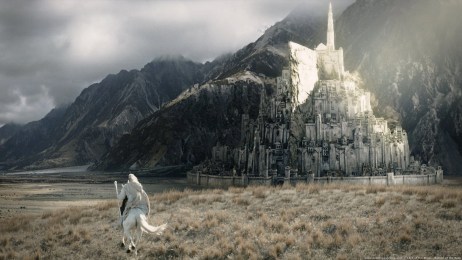
The Lord of the Rings: The Return of the King (2003), New Line Cinema.
4. Wilderness
A vast, untamed environment symbolizing both danger and the potential for self-discovery. It is indicative of the archetypal experience of descending into one’s shadow or unconscious on a quest for personal growth and wholeness.
For Example: The Call of the Wild, Wild, The Revenant, The Edge

Wild (2014), Fox Searchlight Pictures.
5. The Wasteland
A barren, desolate landscape representing decay, loss, and the need for renewal or rebirth. Can share attributes with the ocean and the desert. It is indicative of the archetypal experience of confronting corruption and mortality.
For Example: Mad Max: Fury Road, The Road, The Book of Eli, The Grapes of Wrath, Children of Men, The Walking Dead, Chernobyl
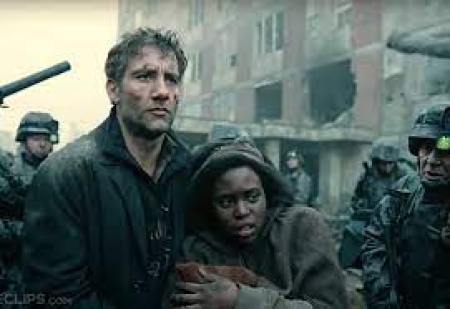
Children of Men (2006), Universal Pictures.
6. Dream World
A surreal, fantastical world accessed through dreams or imagination, often challenging reality. Can also be a “mirror world,” paralleling reality in some telling way. It is indicative of the archetypal experience of confronting the unclaimed shadows of one’s unconscious—looking at what one doesn’t want to look at or confronting one’s fears.
For Example: Inception, The Wizard of Oz, Spirited Away, Eternal Sunshine of the Spotless Mind, and my own Dreamlander
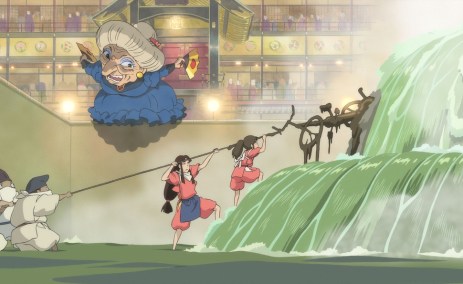
Spirited Away (2001), Studio Ghibli.
7. Temple or Sacred Space
A place of reverence and mystery, representing spiritual or sacred knowledge. It is indicative of an encounter with the divine, with archetypal Wisdom or Love, or sometimes just with a form of higher intelligence.
For Example: Seven Years in Tibet, Stargate, The Last Crusade, The Hunchback of Notre Dame, The Shack

The Hunchback of Notre Dame (1996), Walt Disney Pictures.
8. The City of Gold
A mythical city symbolizing the pursuit of wealth, success, or an idealized destination. It is indicative of an archetypal encounter with the ego, all that one desires or identifies with and all its subsequent temptations.
For Example: The Road to El Dorado, Atlantis: The Lost Empire, Lost Horizon, Treasure of the Sierra Madre, Lost City of Z

Atlantis: The Lost Empire (2001), Walt Disney Pictures.
Archetypal Settings in the 6 Life Arcs
The symbolic and archetypal settings listed above are only a sampling of those available for you to use in your stories. Writers often instinctively choose the right archetypal setting to represent the central conflicts and themes of their characters’ journeys. Sometimes it will even turn out that a setting you thought you chose for practical reasons is the perfect metaphor and catalyst for your story’s deeper explorations of psyche and spirit.

Writing Archetypal Character Arcs (affiliate link)
In my book Writing Archetypal Character Arcs, I explored the six primary arcs of the human life cycle, each representing a significant initiation, beginning with the Maiden’s coming of age and traveling all the way through to the Mage’s surrender of life. These stories (of which the Hero’s Journey is the second) are deeply powerful frameworks upon which to build plots that tap the archetypal foundations we share with our readers.
If you are interested in writing one of these arcs (which you can explore in more depth here), you may be particularly interested in mapping out the specific archetypal settings inherent to each one.
1. The Maiden: Home
The Maiden Arc begins in the Protected World of her early residence and takes her into the Real World beyond its boundaries. Although this transition can be dramatized via any number of possible symbolic settings, the primary archetypal setting around which her entire journey revolves is that of the Home.
Specifically, this is the Home of her childhood, the home of her parents or caretakers. In certain types of stories, this may not be represented literally, but it should evoke the sense of being relatively safe and cared for. The Maiden’s growth arc is that of moving beyond the controlling protection of her authorities into responsibility for herself and her own well-being. The Home setting symbolizes everything she risks losing in this transformation, as well as the constrictions of childhood she is being called to leave behind.
For Example: Ever After, Bend It Like Beckham, The Truman Show, Little Women
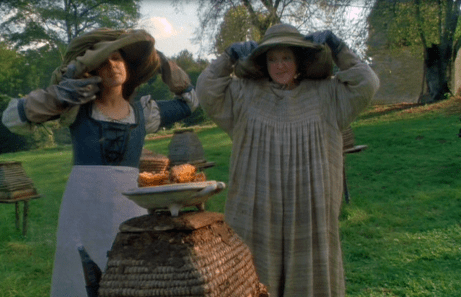
Ever After (1998), 20th Century Fox.
2. Hero: Village/Road
The Hero Arc begins in the Normal World of the First Act and takes him into the Adventure World of the Second Act. The archetypal setting that frames both these symbolic words is the Village. Best known from classic portrayals of the Hero’s Journey, such as those originated by Joseph Campbell and Michael Vogler, the Village represents the home the Hero shares with his tribe. It is the place from which he leaves to embark on the Road during his quest; indeed, it is the place he specifically leaves to protect. And it is the place to which he will return with the healing elixir at the end after overcoming the Dragon.
Although the Village may be literally represented by a small town, what it symbolizes is community. Like the Maiden’s Home, the Village encompasses both the stifling qualities the Hero wants to leave behind and must fully individuate from, but also the redemptive and loving qualities that will inspire him to return with aid and to re-integrate as a healthy member of society. The Road, with all its dangers, will provide the Hero with the adventure he craves, the experience he lacks, and ultimately the perspective required to find his place within the Village.
For Example: Mulan, Treasure Island, The Goonies, Back to the Future

Back to the Future (1985), Universal Pictures.
3. Queen: Hearth/Kingdom
The Queen Arc begins in the Domestic World of the First Act and takes her into the Monarchic World. She will begin at the Hearth, a cozy space not unlike the Maiden’s Home, but with the difference that the Queen is ruler of this little world. The Hearth represents her great loving heart and her capacity to care for others. She will then be challenged to grow into greater leadership by stepping beyond the Hearth into the wider Kingdom.
Although the Kingdom can be seen as an archetypal backdrop for all the archetypal arcs (or, really, any story), for the Queen the symbolism of the Kingdom is specifically pertinent, as she is challenged to take the throne of her story’s world. The Kingdom represents a broadening of her influence. She moves from being responsible for a family or perhaps the Village to now taking charge of a much vaster realm. The contrast between Hearth and Kingdom is striking, and the transition is not always an easy one, as embracing the power of the Kingdom often feels like sacrificing the comforts of the Hearth.
For Example: Elizabeth, A League of Their Own, The Incredibles, 42
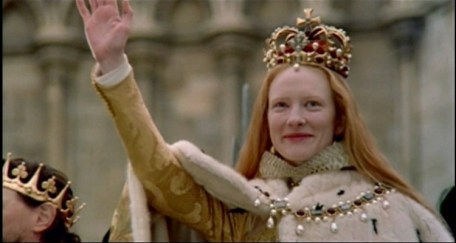
Elizabeth (1998), PolyGram Filmed Entertainment.
4. King: Palace/Empire
The King Arc begins in the Regal World and takes him into the Preternatural World. The foundational setting archetype for the King is that of the Empire he rules, which is often symbolized on a smaller level by the Palace in which many of the scenes take place. Although the King may venture outside the Palace, he will not venture outside his Empire. Rather, the great Cataclysm that threatens his reign will infiltrate his realm and come to him.
The Cataclysm itself can be viewed as a sort of setting—as an apocalyptic stormscape of sorts—that alters the base setting of Empire, turning what was once safe and protected into someplace dangerous and uncertain. The King’s arc will evolve him into a surrender of his power and an exit from the world stage. The supernatural aspects of the Preternatural World may be represented by grand archetypal settings, but more likely by the inner landscape of his own mind.
For Example: Casablanca, Iron Lady, Braveheart, Black Panther

Black Panther (2018), Marvel Studios.
5. Crone: Hut/Underworld
The Crone Arc begins in the Uncanny World and moves to the Underworld. Symbolically, a Hut in the dark forest best represents the Crone’s starting place. She begins in a comparatively small and confined physical space—symbolizing, in part, the comparative smallness and constriction of her own diminishing physicality. From there, she will begin to explore her potential for psychological and spiritual vastness.
The Underworld is the crucial archetypal setting for the Crone. It represents her central challenge of confronting Death, via her own mortality, and discovering the hope necessary to still embrace Life. Although the Underworld may, of course, be dramatized literally, it may also be represented quite subtly. What is important is that it brings with it that sense of the uncanny—the sense of moving beyond the ordinary into non-ordinary reality.
For Example: Howl’s Moving Castle, Our Souls at Night, Up, Paladin of Souls

Howl’s Moving Castle (2004), Studio Ghibli.
6. Mage: Cosmos
The Mage Arc begins in the Liminal World and moves to the Yonder World. What is meant by this is that the Mage begins already with a broadened perspective that allows him to see the greater truths of Life and to look beyond into the even greater truths of Death. From there, the arc of his story will eventually take him beyond this world, into the “Yonder.” His realm is bigger than simply the practical concerns of the Queen’s Kingdom or the King’s Empire; he understands that these domains are but tiny pieces of the larger Cosmos.
However, as big as the Mage’s archetypal setting can indeed be, it is often represented more practically by the much smaller archetypal settings of previous archetypes. The Village, Kingdom, and Empire can all be on the map of his journey, as he travels to help younger archetypes with their own challenges. What is most important in choosing the Mage’s archetypal settings is that they contrast the physical limitations with his own understanding of himself as a “citizen of the Cosmos,” as someone who is “in the world, but not of it.”
For Example: Miracle on 34th Street, Mary Poppins, The Legend of Bagger Vance, Star Wars: A New Hope

***
While all stories find grounding in realistic descriptions, the magic of symbolic and archetypal settings shapes a narrative’s very soul. Symbolic settings transcend the literal, weaving layers of meaning into the narrative fabric, while archetypal settings tap into the symbols, resonating across cultures and epochs. As conduits of collective human experiences, these settings unlock profound themes that transport audiences into the realms of metaphor and myth. Each symbol and archetype serves as a portal, inviting readers on a transformative journey.
Wordplayers, tell me your opinions! What symbolic and archetypal settings have you used in your stories? Tell me in the comments!
Click the “Play” button to Listen to Audio Version (or subscribe to the Helping Writers Become Authors podcast in Apple Podcast, Amazon Music, or Spotify).
___
Love Helping Writers Become Authors? You can now become a patron. (Huge thanks to those of you who are already part of my Patreon family!)





